Visitors to the Hawaii Volcanoes National Park will find plenty of things to do, surrounded by both lush greenery and otherworldly barren landscapes. With so much to see and do on the big island of Hawaii, it can be tough to figure out what’s best for your visit. We’ve got your nine top recommendations for enjoying Hawaii Volcanoes National Park.
Volcano activity is always unpredictable and ever-changing, so visitors should always check the latest eruption updates before planning their visit. While there is no guarantee that you’ll be able to see an active lava flow during your trip, there are plenty of other things to enjoy in Hawai’i Volcanoes National Park. From hiking along trails surrounded by rich green scenery to strolling along an older lava flow field, this diverse park has something for everyone!
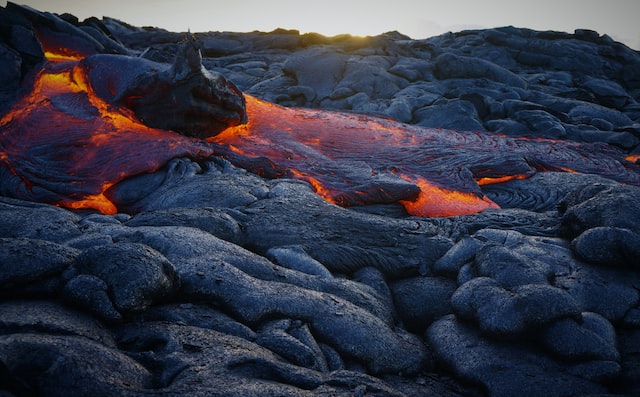
Hawaii Volcanoes National Park is a fantastic park to visit year-round. Where else can you embrace the opportunity to see geological change happen right in front of you? When people think of geology they think of shifts that occur over millions of years. But here at Hawaii Volcanoes National Park, you can witness the wonder and devastation that comes as molten rock is churned up from the earth’s core toward the surface and spit out as new land is made.
November through March are the wetter months on the island, while April through October are drier. Of course, you’ll have to deal with crowds if you come during widely recognized vacation times such as around Easter and July – August. But whenever you choose, take time to consider how you may be able to give back to this amazing destination. Check out Stewardship at the Summit for more information about what the National Park Service is doing to support this ever-changing ecosystem and how you might help.
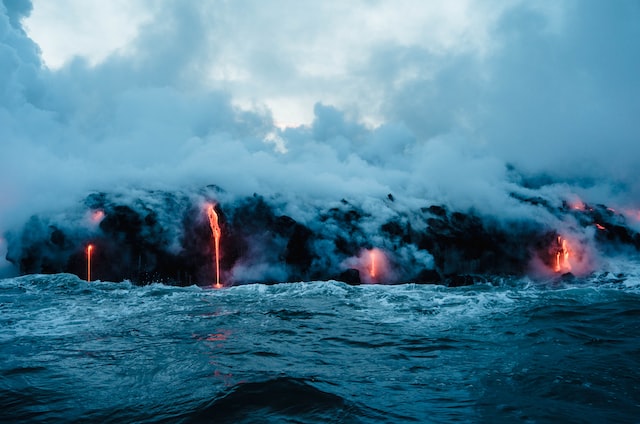
Where Is Hawaii Volcanoes National Park?
Hawaii Volcanoes National Park, on the biggest island of the Hawaiian chain, is 30 to 45 minutes from Hilo and 2.5 – 3 hours away from Kona. So if you want to maximize your time at the park you may want to consider at least one night in Hilo. This park, established in 1916, became the 13th national park in the United States. But was considered sacred to the indigenous Hawaiian people long before that, and can easily take up two days of your time.
You may also want to consider a stay at the Volcano House, the only lodging inside the park grounds. You can arrange for standard guest rooms that sleep 1 – 4 guests or the site also handles campgrounds and cabins. Please plan ahead by at least a couple of months when booking.
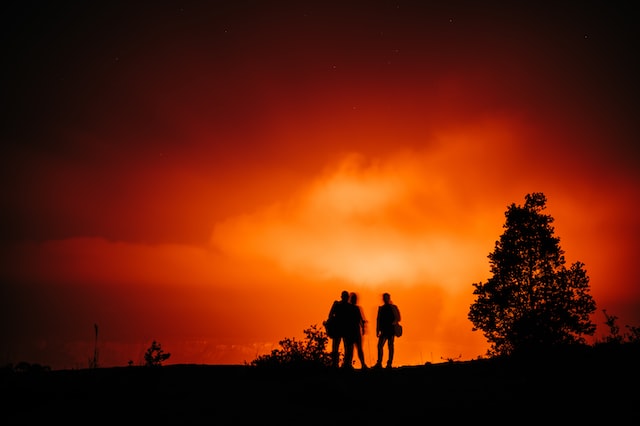
Tips to Enjoy Your Stay
Whether you are taking a scenic drive along Crater Rim Drive, hiking across a Halema’uma’u Crater, or just walking the quick Sulpher Banks loop trail here are some tips that will help make your time here more enjoyable.
-
- Stay on marked routes and pay attention to warning signs
-
- Consider a stay on the Hilo side to get the most out of your time in the park
-
- Wear protective hiking gear, such as sturdy shoes and long pants – lava rocks can be jagged
-
- Stay until after dark to see the glow from the lava – just be sure to stay in open marked areas
-
- Be aware of updates – this is an active volcano and wildlife area, and closures happen frequently
-
- Get an early start – parking lots fill quickly
-
- Pack food and drinks, bring plenty of water, as there are very limited resources once you are in the park
- This is a cashless park and will no longer accept cash for entrance fees as of May 26th, 2023. Be sure to bring another form of payment such as debit or credit card.
What to Do
Mauna Loa is the largest volcano on earth and her three other partners, Kilauea, Hualalai, and Mauna Kea pave the island with lava and provide fantastic insights into how our world works. The national park is a lesson in contrast with lush rainforest, green landscapes and barren wastelands. You can stand in awe of golden orange and red lava flows as Hawaii’s biggest island continues to grow into the Pacific Ocean. Volcanic activity is definitely a possibility as you are visiting some of the most active volcanoes, but there is so much more to a visit to this wonderful national treasure than volcanic eruptions.
The Kilauea Visitor Center, just past the park entrance, is a great first stop as you enter the park. This is one of the best places for visitors to get up-to-date information on volcanic activity from park rangers as well as current closures. It’s open most days from 9:00 AM – 7:00 PM. Buy something from the gift shop as all proceeds go toward park programs. We recommend the following top activities in order to make the most out of this venue.
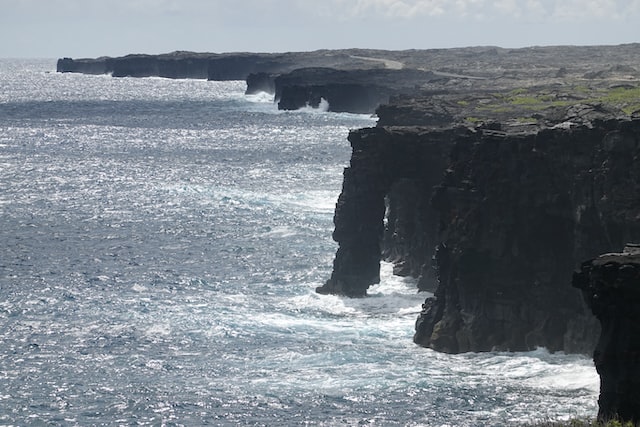
Visiting Hawaii Volcanoes National Park: Top 7 Things to Do
-
- See the lava flow
-
- Hike the Kīlauea iki trail
-
- Hike Crater Rim trail
-
- Drive Crater Rim Drive
-
- Hike Devastation Trail
-
- Drive Chain of Craters Road
-
- See the Pu’uloa Petroglyphs
-
- Explore Thurston Lava Tube
-
- Visit Mauna Loa for stargazing
With one full day, you could see all the sites around the Kilauea Caldera and a bit of the Chain of Craters Road. Amazing day hikes include Crater Rim Trail and Keanakako’i Crater. Hike across a lava field to the largest petroglyph field, the Pu’uloa Petroglyphs. Or explore the Ha’akulamanu sulfur banks where volcanic gases have colored the surface with crystals.
You can walk through the misty rainforest to the Thurston Lava Tube before heading down to the floor of the Kīlauea caldera dotted with cinder cones and steam vents or extend your trip with a longer hike to Byron Ledge in combination with the Kilauea Iki trail.
With two days you could also include the trip to Mauna Loa for star gazing. Or take an easy hike to the Waldron Ledge portion of the Crater Rim Trail to see the dramatic volcanic crater that collapsed in 2018. If you are up for an adventure check to see if you can get a permit to hike the strenuous 19-mile trek to the summit. But as always, check the national park service site first for closures.
For those who are wondering about a trip to the Hawaiian Volcano Observatory and the Jaggar Museum please be aware that since the 2018 eruption of the Kilauea volcano, the area where these buildings are located has been significantly damaged. In December 2022 the park released plans for a relocation project.
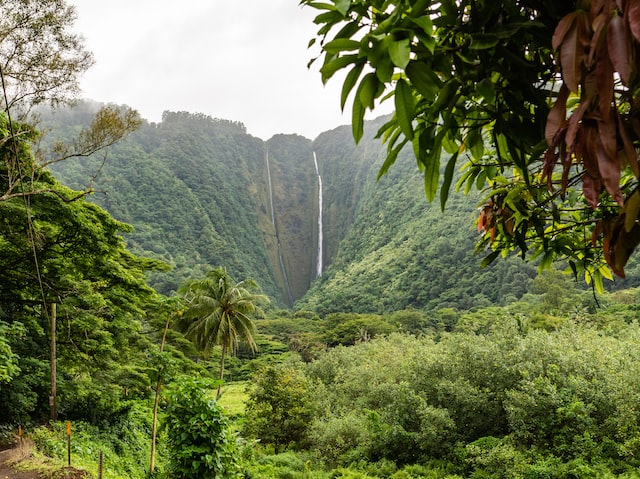
Ready to explore the amazing Hawaii Volcanoes National Park? Make sure to check the current conditions and latest eruption updates before planning your visit, and be sure to bring your camera! Whether you’re hiking along trails surrounded by lush greenery or strolling along an older lava flow field, there’s something for everyone in this diverse park.
Ready to bring your travel goals to life? Grab our weekly Travel Goals Newsletter. Considering another Hawaiian national park? You can get our detailed post on how to get the most out of your visit to Haleakala National Park here.
